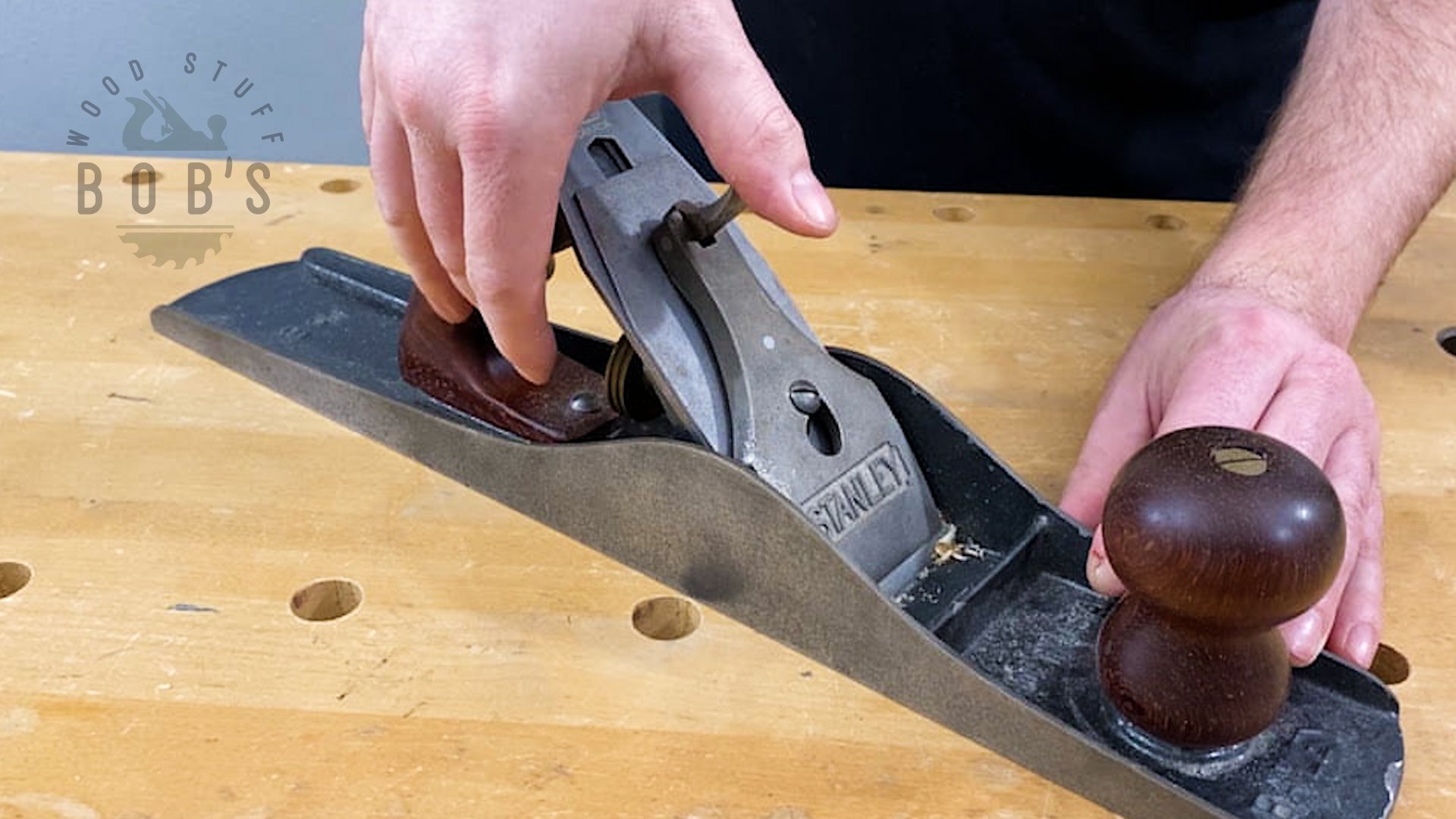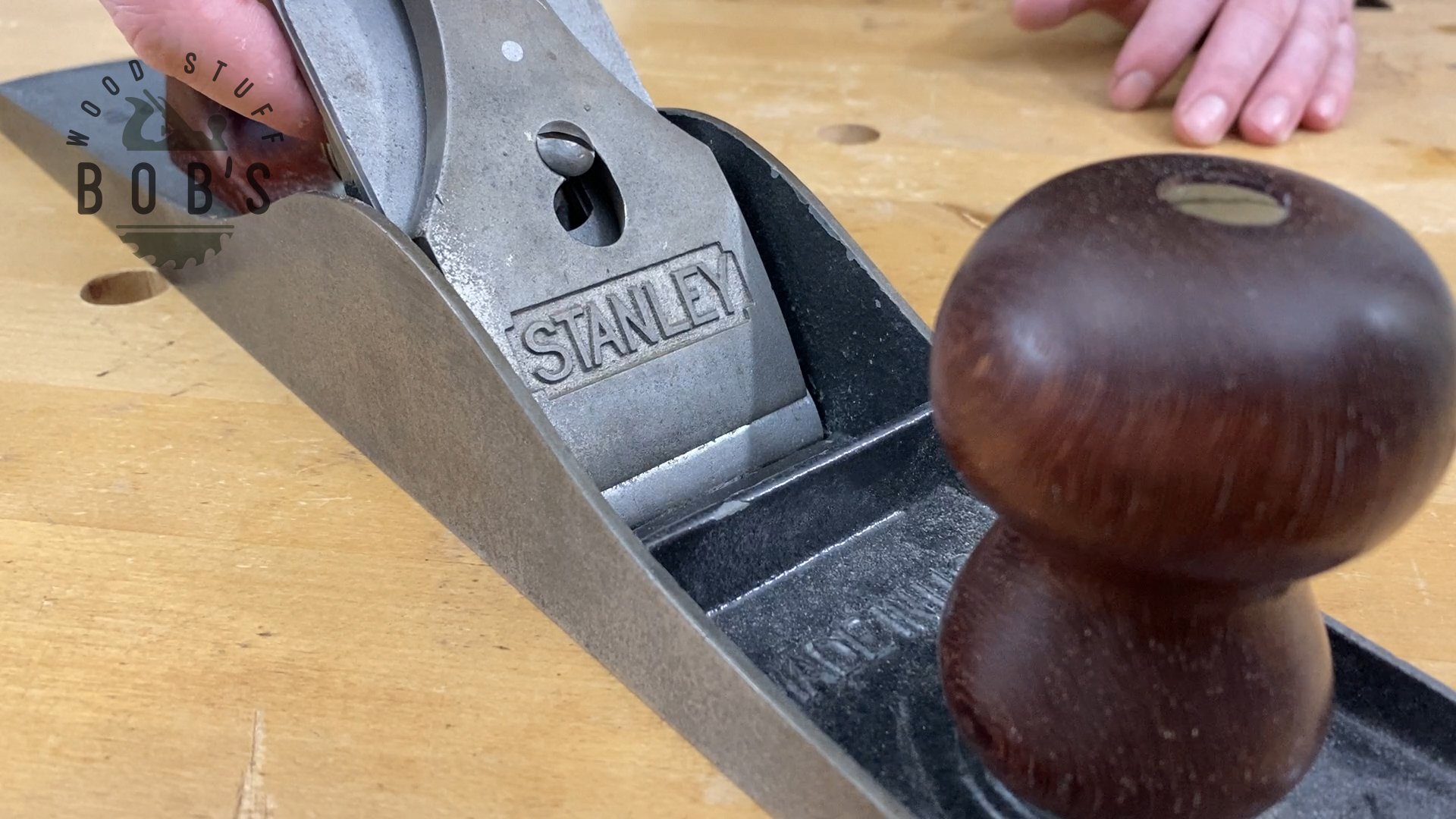Hand Plane Parts: All About the Lever Cap
The lever cap, along with the current design of metal hand plane, was patented by Leonard Bailey in 1858.
There have been minor revisions over the years, but the lever cap has remained functionally unchanged for the last 160 years since its invention.
Different chip breakers from Stanley, Bailey, and Bedrock labeled planes
What Does the Lever Cap Do?
The lever cap holds the blade assembly (cap iron and plane iron) tight to the bed of the frog. The lever cap removes the need for a wedge to secure the blade, as on traditional wooden planes. This is one of the features on the Bailey plane design that gets rid of the need for a hammer to adjust the plane.
The lever cap holds down the chip breaker and plane iron.
The lever cap places even force across the edge of the chip breaker and plane iron.
Lever cap pressing on the chip breaker
This is necessary because metal planes have a thin blade that can flex and vibrate during use, which is called chatter. Chatter on the blade can result in an uneven wood surface and cause the blade to loosen over time.
Metal bench planes have a thin blade.
By pressing down evenly across the cap iron and plane iron, the lever cap makes these three pieces act like one solid wedge.
The lever cap, cap iron, and plane iron make one solid wedge.
How Does the Lever Cap Work?
The lever cap works by using a cam lock to apply tension between the cap screw and the frog to which it’s attached.
There is tension between the lever cap and the cap screw.
The cam lock has two settings, tight and loose.
Lever cap on loose setting.
Lever cap on tight setting.
There’s a flat spring attached to the bottom of the lever cap that makes it snap to one of two positions.
Flat spring on lever cap
The fulcrum of the lever has a square shape with one wider side. When that side is up it puts tension on the blade assembly and holds it to the frog.
Lever cap in loose position
Lever cap in tight position
Tuning the Lever Cap
The tension on the lever cap is fine-tuned by rotating the cap screw with a flathead screwdriver. As you get experience tuning a hand plane, you will learn to feel a perfect fit on the lever cap. Functionally, it should be tight enough that the blade doesn’t shift while you’re operating the hand plane, but loose enough that it is easy to adjust the blade with the depth adjustment nut and the lateral adjustment lever.
Adjusting the cap screw with a screw driver
Honing the Lever Cap
Start by placing the lever cap vertically on a whetstone or lapping plate. Pull it in a straight line, keeping it vertical. Repeat until the edge of the lever cap is straight.
Honing the edge of the lever cap
Once the edge has been honed, switch to the bottom face of the lever cap. Slide that back and forth against the whetstone to flatten 1/8″ to 1/4″ on the end. Take caution to hold a consistent angle while honing this face.
Honing the bottom face of the lever cap.
Continue honing the bottom face until there is a flat continuous plane. This will ensure a solid connection with the chip breaker (cap iron).
The freshly hone edge of the lever cap.
After honing the lever cap, make sure to treat it with a rust inhibitor to protect the newly exposed metal. You can use oil, paste wax, or Boeshield T-9, which is my favorite because it goes on as a liquid and dries like a wax.
Protect the fresh metal with a rust inhibitor.
Now that the lever cap has been honed, it will make solid contact along the chip breaker and ensure that this part of the hand plane is tuned properly.
For more information on tuning hand planes, check out my Hand Plane Parts playlist on YouTube.
Some links are Amazon affiliate links, and I earn a percentage on qualified sales.


















